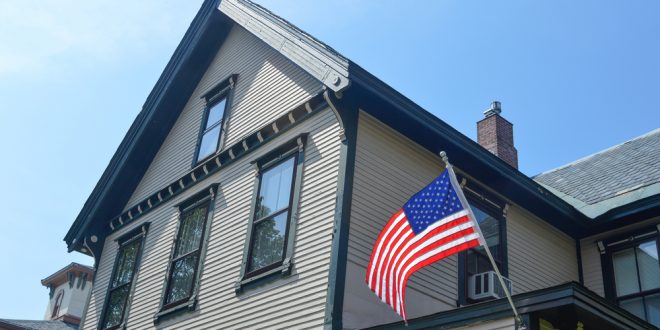US Existing Home sales rose sharply according to data published by the National Association of Realtors on Friday. That took the 12-month rolling number of sales higher to 6.50M from 6.09M in December, above the expected 6.10M. The median price of homes sold was $350.3K, up 15.4% YoY. Home sales in the U.S. jumped in the first month of 2022, while the number of homes for sales hit a new record low.
Existing home sales rose 6.7% to a seasonally adjusted 6.50 million units in January from a month earlier, according to the National Association of Realtors. The number of sales was down 2.3% from the same month a year ago. Home sales in December were revised down to 6.09 million from 6.18 million. The results far exceeded analysts’ expectations of a 1.3% month-over-month decline to 6.1 million units, according to Bloomberg consensus estimates.
Buyers were likely anticipating further rate increases and locking-in at the low rates, and investors added to overall demand with all-cash offers. Consequently, housing prices continue to move solidly higher.
The median existing-home price for all housing types in January was $350,300, up 15.4% from January 2021 ($303,600), as prices rose in each region. Home prices were driven up by sales of more expensive homes priced above $500,000.
The narrative is the same, few sales are occurring in the low end because of the lack of inventory, adding that homes priced at $500,000 and below are disappearing, while supply has risen at the higher price range. Such increases will continue to shift the mix of buyers toward high-income consumers.
There are more listings at the upper end — homes priced above $500,000 — compared to a year ago, which should lead to less hurried decisions by some buyers. Clearly, more supply is needed at the lower-end of the market in order to achieve more equitable distribution of housing wealth.
Total housing inventory at the end of January was 860,000 units, down 2.3% from December and down 16.5% from one year ago (1.03 million) — a record low since the NAR started tracking the data in 1999 for all types of homes.
It is the lowest inventory count in modern history. NAR starting tracking inventory for single family homes in 1982.

 Noor Trends News, Technical Analysis, Educational Tools and Recommendations
Noor Trends News, Technical Analysis, Educational Tools and Recommendations




